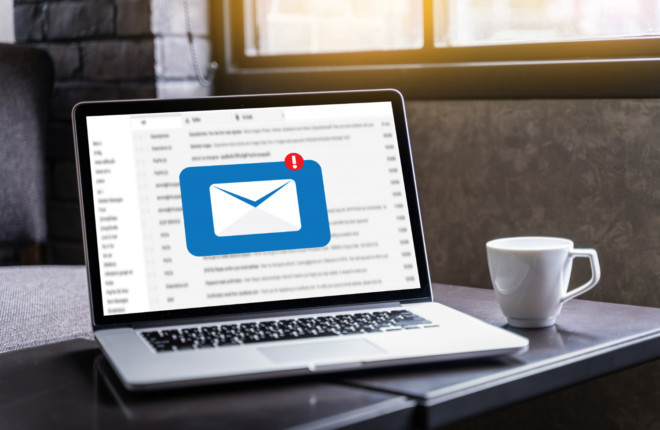High email deliverability does not happen by chance. It is dependent on various factors, including relevance, data security, content, and the proper technological setup. The list goes on.
The good news is that you can navigate the majority of deliverability levers on your own. Dedicated IP addresses operate following the digital purity rules and a few certificates aid in building trust. Then if you already know how to get recipients who are ultimately interested in your emails and newsletter, there isn’t anything that can go wrong.
If you have a higher-than-average bounce rate or just want to lower your percentage for better outcomes, here are several methods for lowering email bounce rate and improving email deliverability.
Focus On Personalization
Consumers, both online and offline, demand meaningful and customized experiences. To meet those demands, advertisers are attempting to use email personalization to transition toward 1:1 interactions that not only meet but exceed, consumer expectations and set them apart from the competition.
One of the prime factors for emails landing in spam and then on the blocked list is a lack of personalization when executing a bulk email campaign.
Google and Microsoft, the two main email providers, monitor email activity. Their goal is to create a good email experience for their users. This means that if recipients delete your message quickly, or worse, delete it without reading it, they view your message as undesirable to their users and may relegate your future emails to the spam folder.
So, by making your message engaging and personal you create a better experience. When Google and Microsoft see high engagement with your emails, such as opens, clicks, and read time, they reward you by improving your sender reputation.
To help you decide the relevancy of your email message, track the recipients’ engagement with your emails. A metric that is often used for monitoring engagement is the “click to open rate”; the number of people who clicked a link in your message divided by the number of people who opened it. This ratio indicates whether recipients who are reading your message are engaging with it. A good percentage is 20% or more, which suggests that your message resonates with your recipients.
Working on Deliverability Itself
Deliverability is another area that you should focus on to reduce the bounce rate. Did you send to a massive list at once or personalized emails for specific audiences? Because that matters a lot.
Google detects “batch and blast” and will automatically put a temporary block on senders to avert a spam threat. If this is a repeated occurrence by the same sender, they may block them permanently. This may have the unintended consequence of legitimate addresses reporting a block or bounce because the blast as a whole tripped a wire.
A high bounce is considered to be 8-10%, so a 25%+ bounce rate will raise their red flags instantly.
If a Gmail (or MS Office) user sends more than 100 emails within an hour, regardless of bounce rate, they will get flagged as a potential spam threat. These email tools are designed for 1 to 1 communication, so when Google and Microsoft detect a large number of sends within an hour, they view it as “unnatural” for 1-to-1 communication and put a temporary block (or permanent block for repeated behavior).
Data Protection Compliance
Compliance with data privacy laws is critical to successful email deliverability. Deliverability is inextricably tied to data security legislation and, most importantly, the recipient’s wishes. Since emails that are viewed or labeled as spam have a detrimental effect on the credibility and, as a result, deliverability. This implies that you can follow a few simple guidelines.
As SalesIntel expands its global data offerings for customers, our unwavering dedication to data protection extends to global legislation such as GDPR, CCPA, and APEC’s Cross-Border Privacy Rules (CBPR) System.
Warm-up Recipients & Watch Your Reports
A warm-up means slowly increasing email delivery volumes throughout several weeks so that the recipient can get used to your messaging and confirm that it is desirable.
This is an important technical prerequisite that forms the basis for good deliverability. You must be authenticated as a secure and reliable sender that comes from first ‘warming up’ the email recipient.
This typically comes into practice when email marketers are trying to build trust within a large email list volume at one time. A good practice is to send a few ungated, relevant pieces of content to recipients to engage with. This gives them the benefit without asking for anything in return.
Limit Your Sending Audience: Only bring in new emails of companies whom you know are a good fit for your product/solution/service and are decision-makers. Not everyone at your target account is going to be a buyer persona.
Monitor Your Analytics: No email list is 100% accurate. You will have a few bounces. The point is to monitor your first few emails closely to see the delivery rates and engagement rates.
Excluding your IP address from Gmail’s blacklist.
If you were to end up on an Email Service Provider’s blacklist, it will slow you down, but it is not difficult to dig your way back out. There are many ways to get off blacklists and do your best to not repeat the practices that put you there.
Before you can solve an issue, you must first consider it. This is where you would act as an investigator to figure out why Gmail, for example, is blocking your emails. For the above problem, you can examine the logs of your email server. If you don’t find and fix the issue causing Gmail’s blacklist to trigger then there’s no way to repair your domain reputation.
When you are confident that the spamming activity has ceased, you should plan to request to have your IP removed from Gmail’s blacklist.
Improve Your Domain Reputation
You have to know where you are before you can know where to go. There are several sites where you can check your domain reputation to determine your score. Many of them will score you on a simple 0 – 100 scale. Keep in mind: Staying above 70 is the best place to be.
Here are a few popular sites to check the sender reputation:
- SenderScore.org
- TrustedSource
- Google Postmaster Tools
- Microsoft SNDS
- Cisco Talos Intelligence
To secure your domain’s credibility score, concentrate on sending out high-quality, dynamic emails that have real value to your subscribers. Don’t bombard their mailbox with promotional requests. And, keep an eye on your metrics to see how often you can send emails and what kinds of material works well.
Data Hygiene Is the Key
Email marketing is a viable lead generation technique. Given that data decays every 12-14 months, you must preserve data hygiene to maximize the effectiveness of your email campaign efforts. It does, however, require that the sales reps expend their productive time and efforts in re-verifying the results. On the other hand, you lose competitiveness and increase your sales team’s cost-per-hour.
Businesses can collaborate with data partners that have human-verified data for high-conversion email outreach initiatives. Hiring a credible B2B data partner or using a trustworthy data portal has enabled companies to concentrate on maximizing the efficacy of their email campaigns.
SalesIntel ensures high accuracy and prevents data decay by re-verifying our data every 90 days. Our goal is to help keep email deliverability high and bounce rates low.







